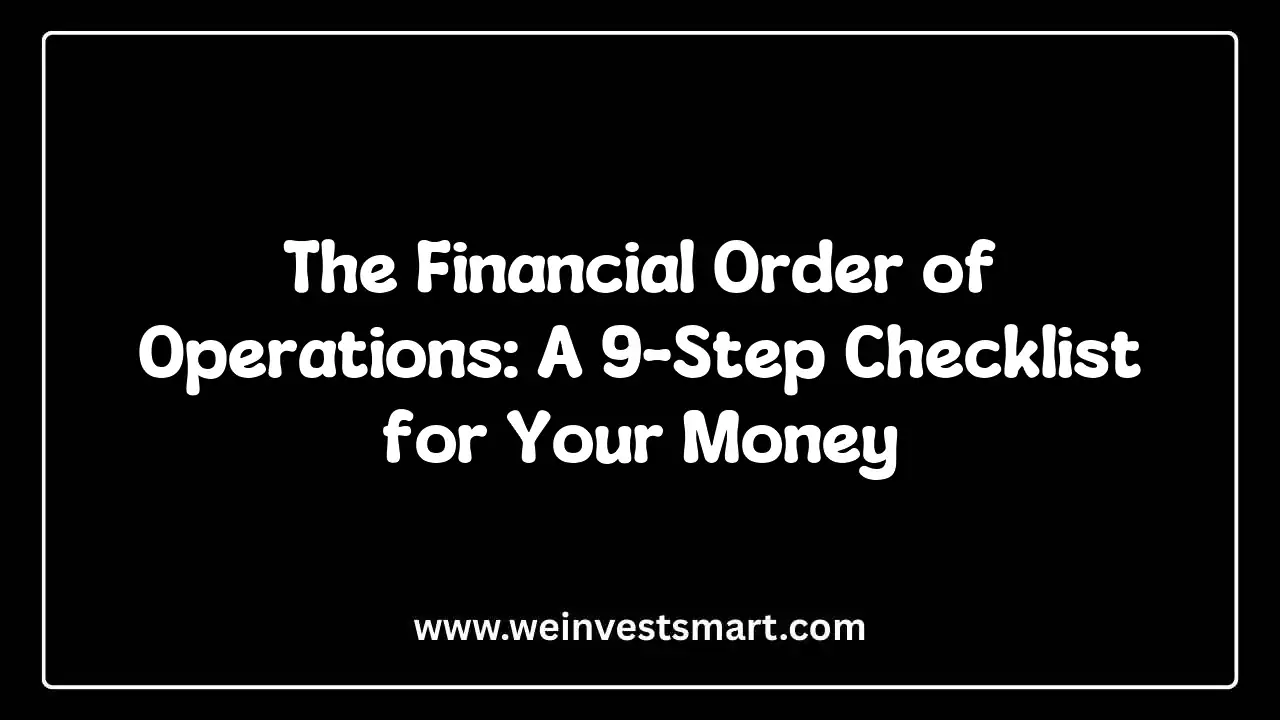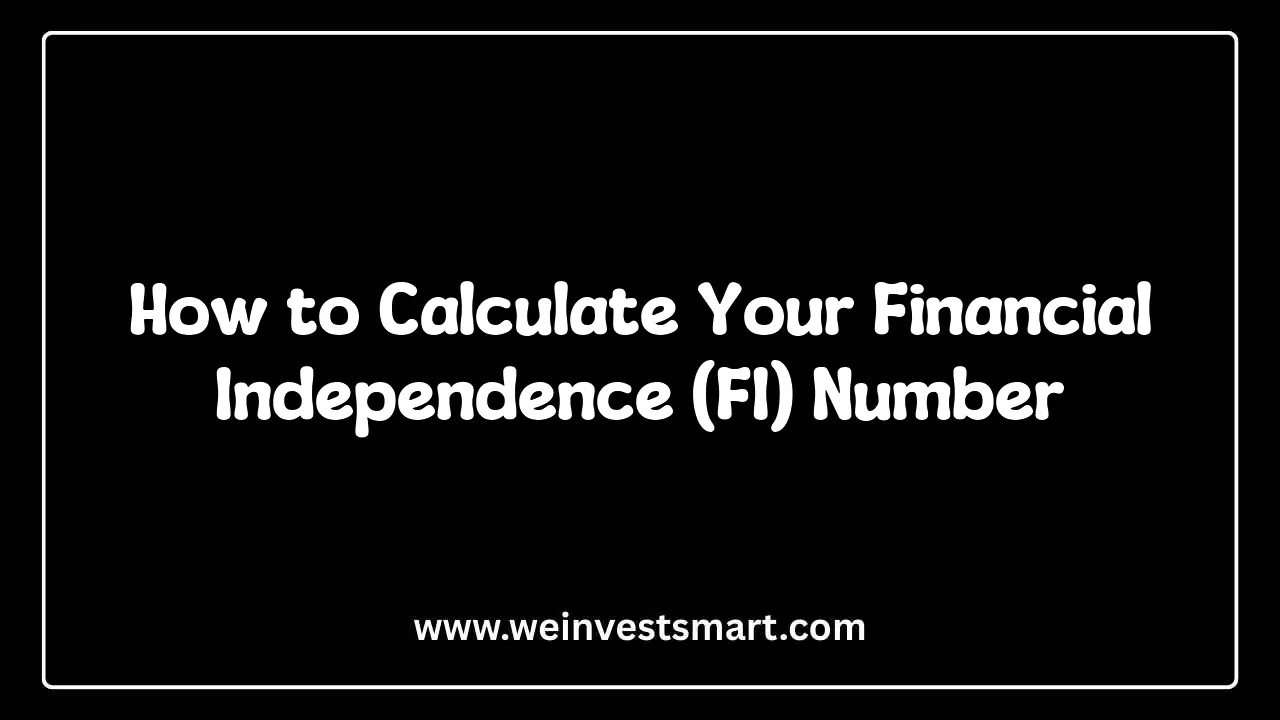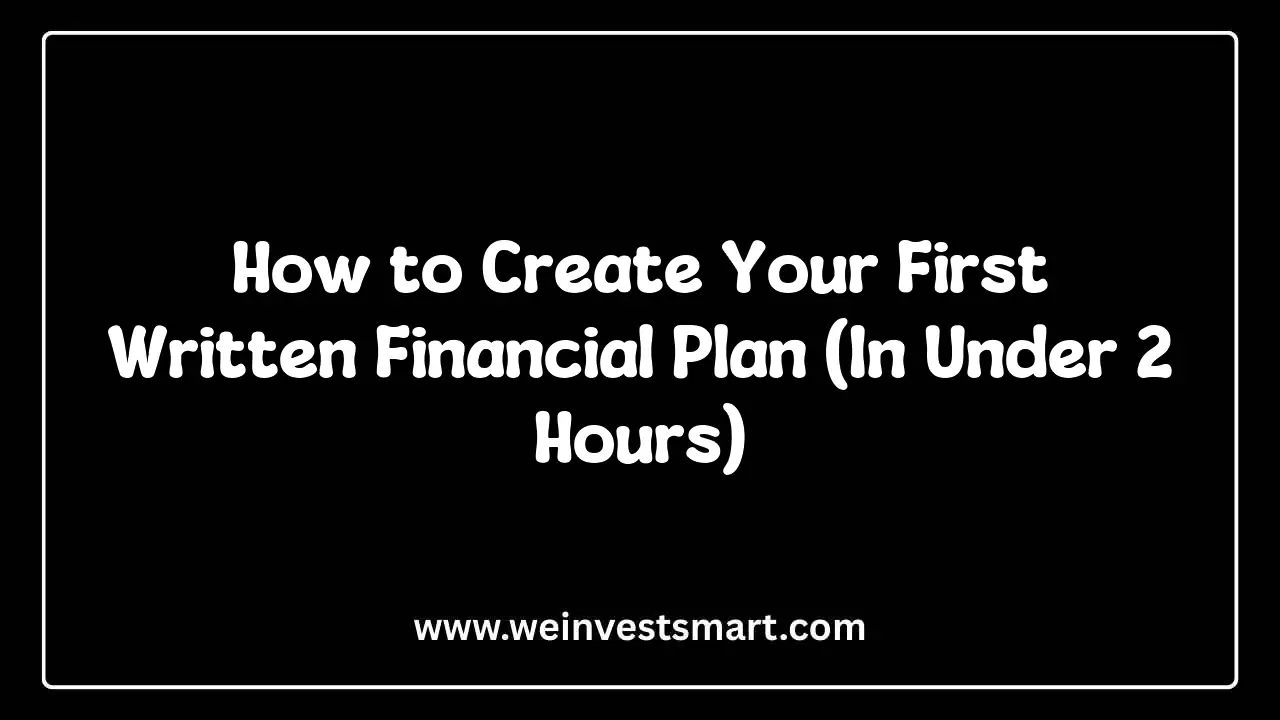· WeInvestSmart Team · financial-planning · 10 min read
The "One-Fund Portfolio": The Simplest and Most Effective Financial Plan for Most People
Stop overcomplicating your investments. Discover the power of a one-fund portfolio—a radically simple strategy using a single target-date or total world index fund to achieve powerful, diversified, long-term growth.
Most people believe that successful investing must be a complex, esoteric art. They’re bombarded with images of frantic traders, labyrinthine charts, and financial gurus peddling “secret” strategies. The investing industry thrives on this illusion of complexity, convincing the average person that they need a dozen different funds, intricate asset allocation models, and constant tinkering to succeed. But here’s the uncomfortable truth: for the vast majority of people, this complexity is not just unnecessary; it’s actively harmful to their returns.
We’ve all been paralyzed by choice. Should I add a small-cap value fund? Do I have enough exposure to emerging markets? Is it time to rebalance? This constant questioning leads to what financial experts call “analysis paralysis,” which often results in doing nothing at all. Or worse, it leads to “tinkering,” where investors constantly buy and sell based on headlines and hunches, racking up fees and taxes while almost certainly underperforming the market.
But what if we told you that the most effective financial plan for most people is also the simplest? What if you could achieve world-class diversification, professional asset allocation, and market-beating results (by beating the fees and mistakes of most other investors) with a single investment? This isn’t a gimmick or a shortcut. It’s the “One-Fund Portfolio”—an elegant, evidence-based strategy that has been championed by some of the world’s most respected financial minds. And this is just a very long way of saying that you can stop playing a game you’re destined to lose and instead, choose to own the entire board.
Why Complexity Is Your Enemy
Before we reveal the specific funds, we have to address the “why.” Why is the industry’s love affair with complexity so damaging? The problem is that complexity creates the illusion of control while simultaneously multiplying the opportunities for error. Every additional fund in your portfolio is another decision point, another chance to let emotion or ego override a sound long-term strategy.
Going straight to the point, simplicity is the ultimate sophistication in investing. A simple plan is one you can understand, stick with, and trust during the market’s inevitable terrifying downturns. When you have a complex portfolio of 15 different funds, and the market drops 30%, your brain starts to second-guess everything. You wonder if you should sell your international fund or your REIT fund. With a one-fund portfolio, your only decision is to keep buying. It short-circuits the behavioral mistakes that destroy long-term returns.
The funny thing is that many investors resist this simplicity because it feels too easy. It doesn’t feel like they’re doing enough to “earn” their returns. But successful investing isn’t about effort; it’s about discipline and patience. This sounds like a trade-off, but it’s actually a desirable thing: we covet this simplicity because it automates good behavior and frees up our time and mental energy to focus on the things that actually matter, like increasing our savings rate and enjoying our lives. You get the gist: the goal isn’t to be a brilliant investor; it’s to be a disciplined one.
You may also be interested in: When Does It Make Sense to Hire a Financial Advisor? (And How to Find a Good One)
The Two Paths to One-Fund Simplicity
Alright, enough philosophy. Let’s get practical. The one-fund portfolio strategy can be executed in two primary ways, both using a single, low-cost, broadly diversified index fund. Your choice depends on whether you prefer a “set-it-and-forget-it” approach with automatic adjustments or a simpler, more hands-on approach.
Option 1: The Target-Date Index Fund (The Ultimate “Set-It-and-Forget-It” Solution)
Here’s where things get interesting. A target-date fund is a professionally managed, all-in-one portfolio that is so simple, it’s often the default investment in 401(k) plans. You choose the fund with the year closest to your planned retirement date (e.g., “Target Retirement 2060 Fund”). That single fund then gives you a complete, diversified portfolio.
Going straight to the point, a target-date index fund is a “fund of funds.” It holds a mix of other basic index funds—typically a U.S. stock market fund, an international stock market fund, and a bond fund. The magic is in its “glide path.” When you are young and far from retirement, the fund will be aggressive, perhaps holding 90% in stocks and 10% in bonds. As you get closer to your target retirement year, the fund automatically and gradually becomes more conservative, reducing its stock allocation and increasing its bond allocation to preserve your capital.
- Example: The Vanguard Target Retirement 2060 Fund (VTTSX) is designed for someone planning to retire around 2060. As of today, it holds about 54% in a U.S. total stock market fund, 36% in an international total stock market fund, and 10% in bond funds. This allocation will automatically shift over the next several decades.
- The Cost: This professional management is incredibly cheap. The expense ratio for a fund like VTTSX is a minuscule 0.08%, meaning you pay just $8 per year for every $10,000 invested.
Option 2: The Total World Stock Market Index Fund (Maximum Simplicity and Control)
For those who want to maintain a 100% stock allocation for the long haul and prefer the ultimate in simplicity, the Total World Stock Market Index Fund is the answer. This is a single fund that aims to buy a piece of nearly every publicly traded company in the world, weighted by market capitalization.
This single fund gives you ownership in thousands of companies across every industry in both developed and emerging markets. It is the definition of maximum diversification. It’s like owning the entire haystack instead of searching for the needle.
- Example: The Vanguard Total World Stock Index Fund (VTWAX) holds over 10,000 stocks from more than 48 countries. Approximately 63% of the fund is invested in the U.S. market, with the other 37% spread across the rest of the globe, from Japan to Germany to Brazil. This allocation shifts naturally as different markets around the world grow or shrink.
- The Cost: The expense ratio is just 0.09%, an incredibly low price for owning the entire global stock market.
You may also be interested in: Estate Planning 101: Why Everyone Needs a Will, a Power of Attorney, and a Living Will
The “One-Fund Portfolio” in Action: A Simple Plan
So, how do you implement this?
- Choose Your Fund:
- If you want a portfolio that automatically manages your risk and becomes more conservative over time, and you don’t want to ever worry about rebalancing, choose a Target-Date Index Fund with the year closest to your expected retirement.
- If you have a very long time horizon, a high risk tolerance, and want to maintain a 100% stock portfolio to maximize potential growth, choose the Total World Stock Market Index Fund.
- Open the Right Account: You can buy these funds in any brokerage account, such as a Roth IRA, a Traditional IRA, or a standard taxable brokerage account.
- Automate Your Contributions: Set up automatic, recurring investments from your bank account into your chosen fund. This is the key to building wealth. Invest the same amount every month or every two weeks, regardless of what the market is doing. This is called dollar-cost averaging.
- Do Nothing: This is the hardest, yet most important step. Once your plan is in place, your job is to ignore the noise. Don’t check your portfolio every day. Don’t panic when the market crashes. Don’t get greedy when the market soars. Trust the plan and let compounding do its work over decades.
You may also be interested in: How to Create Your First Written Financial Plan (In Under 2 Hours)
Addressing the Critics: Is It Too Simple?
But what do we do when we hear the inevitable criticisms? “It’s a one-size-fits-none approach!” “You’re missing out on tilting toward specific factors!” And this is just a very long way of saying that the industry needs complexity to justify its fees.
The critique that target-date funds are too generic is fair, but misses the point. While a bespoke plan from a financial advisor might be technically more optimal, the “perfect” plan that you don’t stick with is infinitely worse than the “good enough” plan that you do. The elegant simplicity of the one-fund portfolio is its greatest strength because it makes it incredibly easy to stick with the plan.
Another concern is that a 100% stock portfolio like a total world fund is too aggressive. This is true for those nearing or in retirement. However, for a young investor with decades to go, the biggest risk isn’t volatility; it’s inflation and not taking enough risk to generate the growth needed for a secure retirement. The historical data is clear: over long periods, a globally diversified portfolio of stocks is the most powerful engine for wealth creation.
You may also be interested in: How to Calculate Your Financial Independence (FI) Number
The Bottom Line: Embrace the Elegance of Simplicity
The one-fund portfolio is a profound declaration of independence from the noise and complexity of the financial media and the investment industry. It is the tangible proof that you understand that long-term investing success is driven not by brilliant strategy, but by brilliant behavior. It replaces guesswork with a disciplined, automated, and evidence-based plan.
Remember, the goal is not to find the “perfect” investment. The perfect investment is the one you can buy consistently and hold for a lifetime without panicking. The one-fund portfolio, in either its target-date or total-world form, is the closest thing to that perfect investment that exists for the average person. You get the gist: stop looking for a secret. The secret is simplicity.
This article is for educational purposes only and should not be considered personalized financial advice. All investing involves risk, including the possible loss of principal. Consider consulting with a financial advisor for guidance specific to your situation.
The One-Fund Portfolio FAQ
What is a one-fund portfolio?
A one-fund portfolio is an investment strategy where you invest 100% of your long-term money into a single, highly diversified mutual fund or ETF. The two most common options are a target-date index fund, which automatically adjusts its asset allocation over time, or a total world stock market index fund, which provides broad global equity exposure.
What is a target-date index fund?
A target-date index fund is an all-in-one fund designed for investors planning to retire around a specific year (e.g., 2060). It holds a diversified mix of stock and bond index funds. The fund automatically becomes more conservative—shifting from stocks to bonds—as its target date approaches.
What is a total world stock market index fund?
A total world stock market index fund is a single fund that aims to track the performance of the entire global stock market. It invests in thousands of companies of all sizes across both developed and emerging markets, providing maximum diversification in a single investment. An example is the Vanguard Total World Stock Index Fund (VTWAX).
Why is a one-fund portfolio effective?
Its effectiveness lies in its elegant simplicity, which promotes good investor behavior. By using a single, low-cost, and broadly diversified fund, it eliminates the need for manual rebalancing and the temptation to tinker with the portfolio. This “set it and forget it” approach helps investors stay the course and capture the market’s long-term returns without making costly mistakes.
Who is a one-fund portfolio best for?
This strategy is ideal for the vast majority of long-term, hands-off investors, especially those just starting out or those who feel overwhelmed by complex investment choices. It provides instant, professional-grade diversification without requiring any specialized knowledge, making it a powerful tool for building wealth over decades.



